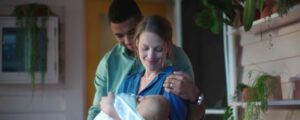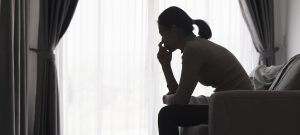A study of the Australian alcohol industry has shown that alcohol is more affordable today than it was in 1980, prompting calls for swift government action to address the availability of dirt cheap alcohol.
Wine is leading alcohol’s price-busting race to the bottom with the study by the Australia Institute finding a standard drink of wine can cost as little as 36 cents.
The findings come as the Commonwealth Government examines the merits of a minimum price for alcohol as a way of discouraging harmful consumption. The Australian National Preventive Health Agency (ANPHA) has developed an issues paper and is currently assessing public submissions.
The study of the alcohol industry, alcohol consumption and affordability, commissioned by the Foundation for Alcohol Research and Education (FARE), provides a snapshot of the changing face of the alcohol industry and Australia’s drinking culture.
The alcohol industry study found that over the last three decades, the cost of alcohol has increased by 15 per cent relative to other consumer prices in Australia. However, during that time Australian incomes have increased by 46 per cent, making alcohol much more affordable.
The Australia Institute Executive Director, Richard Denniss says that left unchecked, the alcohol industry will continue to take advantage of a flawed tax system and force prices downward to further increase sales.
“The price of alcohol is one of the main weapons in the war against excessive alcohol consumption. With cheap wine costing less than bottled water it’s obviously time we took another look at the way alcohol is taxed in Australia,” Mr Denniss said.
FARE Chief Executive Michael Thorn welcomes the Government’s willingness to examine minimum pricing policy options, but has again stated that the best and most immediate way to increase the floor price of alcohol is to abolish the Wine Equalisation Tax (WET).
“We welcome ANPHA’s consultation into a minimum price for alcohol, but in the short term there is a simple and effective way to remedy the problem by abolishing the WET. Government needs to heed the advice of eight separate inquiries and abolish an unfair tax that encourages the production of cheap wine, and replace it with a volumetric alcohol tax that would tax products according to the volume of alcohol,” Mr Thorn said.
Mr Thorn says that while it is true that Australians are paying less at the check-out, the real cost to the nation is in fact much higher and says alcohol products must be taxed based on their alcohol content and the harms these products cause.
“Alcohol use and misuse costs Australia $36 billion each year. We know that low alcohol prices result in higher consumption and harms. A simple change to Australia’s alcohol tax system to abolish the WET, would help to reduce the harms caused by alcohol misuse in Australia,”
Mr Thorn said Mr Thorn believes minimum price should be examined as a complementary policy to protect against harmful discounting and says tax measures on their own will not remove the harmful discounting practices being adopted by alcohol retailers.
“Our alcohol industry is dominated by a handful of powerful producers and retailers, prepared to use whatever marketing, sales and pricing promotions they can in order to increase market share, including selling product at below cost. A recent liquor promotion advertised 750 ml bottles of Sauvignon Blanc for only $1.80 per bottle when purchased in a pack of six. Minimum price legislation would end such practices,” Mr Thorn said.
Other Key Findings
- A standard drink containing 12.5 ml of alcohol can be obtained for 36 cents via cheap cask wine compared with $1.75 for beer and $2.52 for ready-to-drink beverages.
- The average household spends $32.35 per week on alcoholic beverages. Of that weekly total, $12.58 is spent on beer, $8.47 on wine and $5.35 on spirits;that is, 48 per cent is spent on beer, 32 per cent on wine and 20 per cent on spirits. ? Wine is by far the most affordable alcohol product available, relative to wine spirits have increased by 70% and beer has increased by 80%.
- People with the lowest incomes spend $10.61 per week on alcohol, while people with the highest incomes spend almost six times as much ($60.83).
- Liquor retailing is dominated by Coles and Woolworths which have respective sales of $2.8 billion and $5.9 billion and together account for 54 per cent of the market in packaged liquor.






